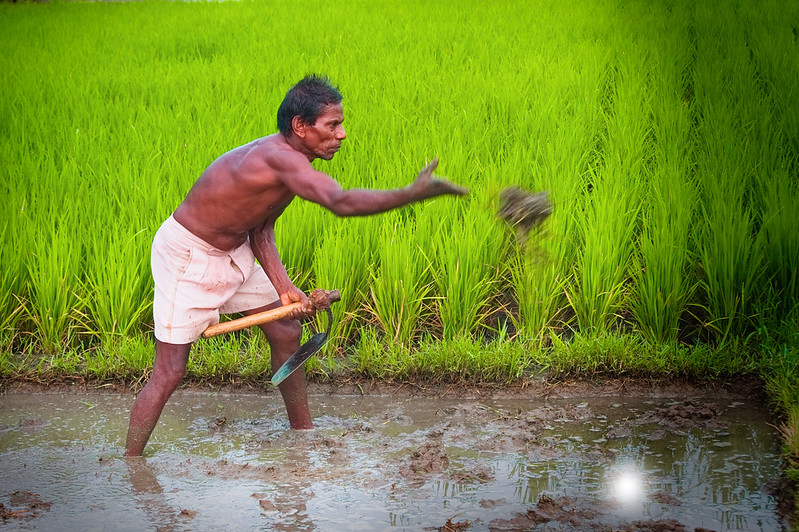India’s Tea Board is helping growers save crops from extreme weather
Tea is particularly vulnerable to climate change as it depends on stable temperatures and consistent rainfall.
S
mallholder tea growers in five Indian states will be helped to adapt to climate change by a USD 17 million dollar fund, after the country’s National Bank for Agricultural and Rural Development accepted a proposal from the Tea Board of India.
Over four years, the fund will assist 50,000 tea growers in Assam, Tamil Nadu, West Bengal, Kerala and Himachal Pradesh. India produces about a quarter of the world’s tea, and Assam accounts for around half of India’s production.
Tea is particularly vulnerable to climate change as it depends on stable temperatures and consistent rainfall. In a 2018 survey in Assam, 97% of smallholders said they felt under threat from adverse climate conditions. Since then, the last year has been especially challenging for many of India’s tea growers.
“We have witnessed very freak weather patterns”, says Arjunan, a small tea grower near Avalanchi on the western slopes of the Nilgiris in Tamil Nadu. Quoted in The Hindu, Arjunan explains why he lost 60 percent of his crop in 2019: severe frosts between December and February were followed by a spike in temperature in April and May, then August brought three years’ worth of rainfall in three days.

Assam, pictured above, accounts for around half of India’s production. Photo by
Rita Willaert/Flickr
Keeping soils hydrated
On the eastern slopes of the Nilgiris, meanwhile, the problem is not enough rain: there are reportedly 15-20 fewer rainy days per year now than a decade ago.
As Professor Dave Reay writes in the Climate-Smart Tea chapter of his book Climate-Smart Food, “Much of the progress on making tea production climate-smart has been focused on water, and how best to deal with too much and too little.”
Drainage is particularly difficult to get right, Reay writes, in the undulating topography of places such as Assam: “Changing drainage in one place may increase flood and waterlogging risks in another, while widespread drainage can mean nutrient and pesticide leaching during rainstorms is made even worse.”
One obvious possibility is to combine drainage schemes with rainwater harvesting: “By creating reservoirs and ponds, farmers can capture more of the heavy monsoon downpours and then later use this same water to irrigate their plants and soils”.
Some enterprising tea growers in Assam, Reay notes, are using such ponds to grow fish, especially grass carp – for smallholders, diversifying income streams is another important strategy for climate adaptation.
Drainage and irrigation are among the focus areas of the Tea Board of India’s new climate adaptation scheme, according to its Director of Tea Development, Mr. S. Soundararajan. Others include shade trees and pest management.
Trees can “make an excellent growing companion to tea bushes”, explains Reay, as they “help to stabilise soils and protect them from the scouring effects of any heavy rainfall” – while during the dry season they can “protect the tea plants from extreme heat and scorching”.

A farmer working on a tea plantation in Tamil Nadu. Photo by Nithi Anand/ Flickr
Promoting organic production
As for pests, the rising temperatures in India’s tea-producing regions are causing more infestations of red spider mite, tea mosquito bugs and looper caterpillars.
Switching to organic farming practices could be a better choice for adaptation than stepping up the use of pesticides. Organic practices encourage higher levels of biodiversity, including natural predators of the pests – while the use of vegetable mulch helps to improve the structure of the soil.
According to a paper by researchers from the Tea Research Institute of the Chinese Academy of Agricultural Sciences, organic farming of tea is about 20-30% less productive – but this is counterbalanced by a 20-50% higher market price. “Promoting organic tea production,” the researchers argue, can be “beneficial to farmers’ incomes” as well as offering “significant scope for climate change adaptation”.
Precision agriculture
There is also scope for technology to help the tea industry adapt, the researchers argue. “Precision agriculture” – using remote sensors and inputs by machine – “is an effective and efficient way of combating climate change, offering considerable savings in natural resources and optimising crop yield and quality”.
Such technological solutions will, however, be beyond the reach of the smallholders who produce about 60% of the world’s tea. In a paper on the socio-economic implications of climate change for tea-producing countries, the FAO explain why tea has traditionally been an attractive crop for smallholders: “it provides work and income throughout the year, requires relatively little investment, labour is available on a casual basis and the risk of complete crop failure is small.”
These smallholders will be in particular need of good advice on how to adapt to climate change: according to one survey, 95% of smallholders in Assam say they are prepared to follow the recommendations of advisory groups and research associations.
That includes advice on which varieties to plant. The genome of the tea plant was mapped in 2017 – it has around 37,000 genes, four times as many as coffee plants – and scientists are currently working to develop new varieties that have greater resistance to climatic extremes without compromising on taste.
The ideas presented in this article aim to inspire adaptation action – they are the views of the author and do not necessarily reflect those of the Global Center on Adaptation.